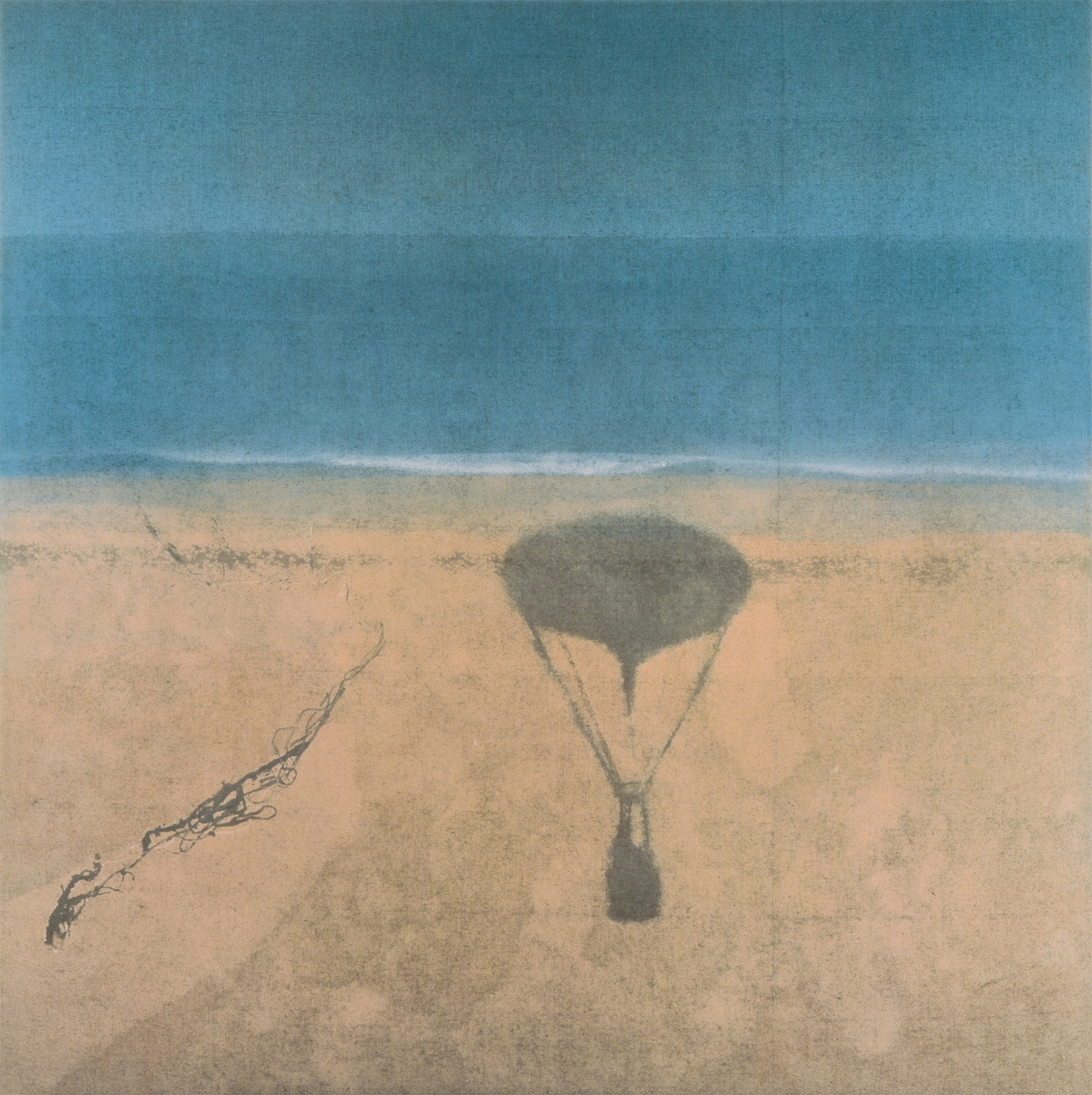Detailed and precise, but veiled in a gauzy softness, even up close there are few clues as to how paint arrived on canvas. Devoid of brushmarks and accumulations of paint, it is the canvas itself, hairy and unprimed, which is the most painterly aspect of Lights, the series that opens this exhibition and marks a turning point in Michael Andrews’ career.
Three works nod to what went before, signalling Andrews’ loose association with the School of London and revealing his earlier interest in groups of people and a more traditional use of paint. When in the 1970s Andrews began to experiment with spraying acrylic paint, painterly marks became less evident, the artist increasingly elusive.
As in art, so in life: former Tate Gallery director John Rothenstein wrote memorably that Andrews (1928–95) was ‘in danger of being taken for a rumour rather than a person’. This was not just a matter of personality, but also the result of a remarkably slow work rate. If spraypainting suggests pace, for Andrews it proved no quicker than using a brush, because, he explained: ‘Within seconds you’ve ruined something that’s gone on for a year.’
Lights VII: A Shadow (1974), Michael Andrews. © The Estate of Michael Andrews. Courtesy James Hyman Gallery, London

In fact the appeal of the spraygun was more metaphysical than practical, blowing paint a technique befitting the aerial theme of Lights. By the time he finished the series, he had become highly proficient and in Lights VII: A Shadow (1974), the paint is little more than a stain. The shadow of a balloon falls on an empty, almost elemental landscape, a liminal space between the observable world, the imaginative and the magical. The viewer’s strange and apparently perilous vantage point creates a sense of unease, dreamlike in its disconnectedness, a mood that recurs throughout Andrews’ work, with even his most naturalistic landscapes frequently disrupted by a high viewpoint.
For Andrews, the true significance of the Lights series was its exploration of Zen Buddhist ideas, the balloon representing the ego in search of enlightenment. But while the spiritual aspect of Lights was deeply felt by Andrews himself, it is perhaps less apparent to the viewer. Subsequent paintings were more successful in this respect and later landscapes, though usually unpeopled, have a spiritual resonance that derives from implied human presence, and the age-old relationship between earth and man.
Permanent Water Mu djula, by the Kunia Massif (Maggie Spring, Ayers Rock) (1985–86), Michael Andrews. © The Estate of Michael Andrews. Courtesy James Hyman Gallery, London

Bodily contact with the ground is a preoccupation of Andrews’ deerstalking paintings, and on a trip to Australia, climbing over Ayers Rock – falling off it, even – proved as essential to his experience as sketching and photographing it. Fragments of the rock itself are incorporated into the paintings, and he used indigenous grasses as masks, spraying around them to characteristically ethereal effect. The paintings seem oddly naturalistic too, capturing the vivid colours of this extraordinary landscape, shimmering in the heat. Simultaneously they evoke some primal, sacred essence, the recurring title Cathedral implying immense size, but also the spiritual significance of Ayers Rock for the Aborigines.
Andrews’ final paintings seem at first to be an expressionistic immersion in the elements; unexpectedly abstract, the greys and browns of London mud and water whipped into painterly flourishes. The boats in The Thames at Low Tide (1993–94) emerge slowly from the mud, viewed from an odd angle that pitches us forward into this newly revealed landscape.
Surely his finest achievement and the culmination of his career, the Thames paintings reconcile lifelong preoccupations with some of the most pressing problems of art. Abstraction resolves into figuration, only to make us wonder if, formed from a soup of silt and mud blown about by a hairdryer mimicking the tide, this is indeed painting after all.
‘Michael Andrews: Earth, Air, Water’ is at Gagosian, London, until 25 March.




